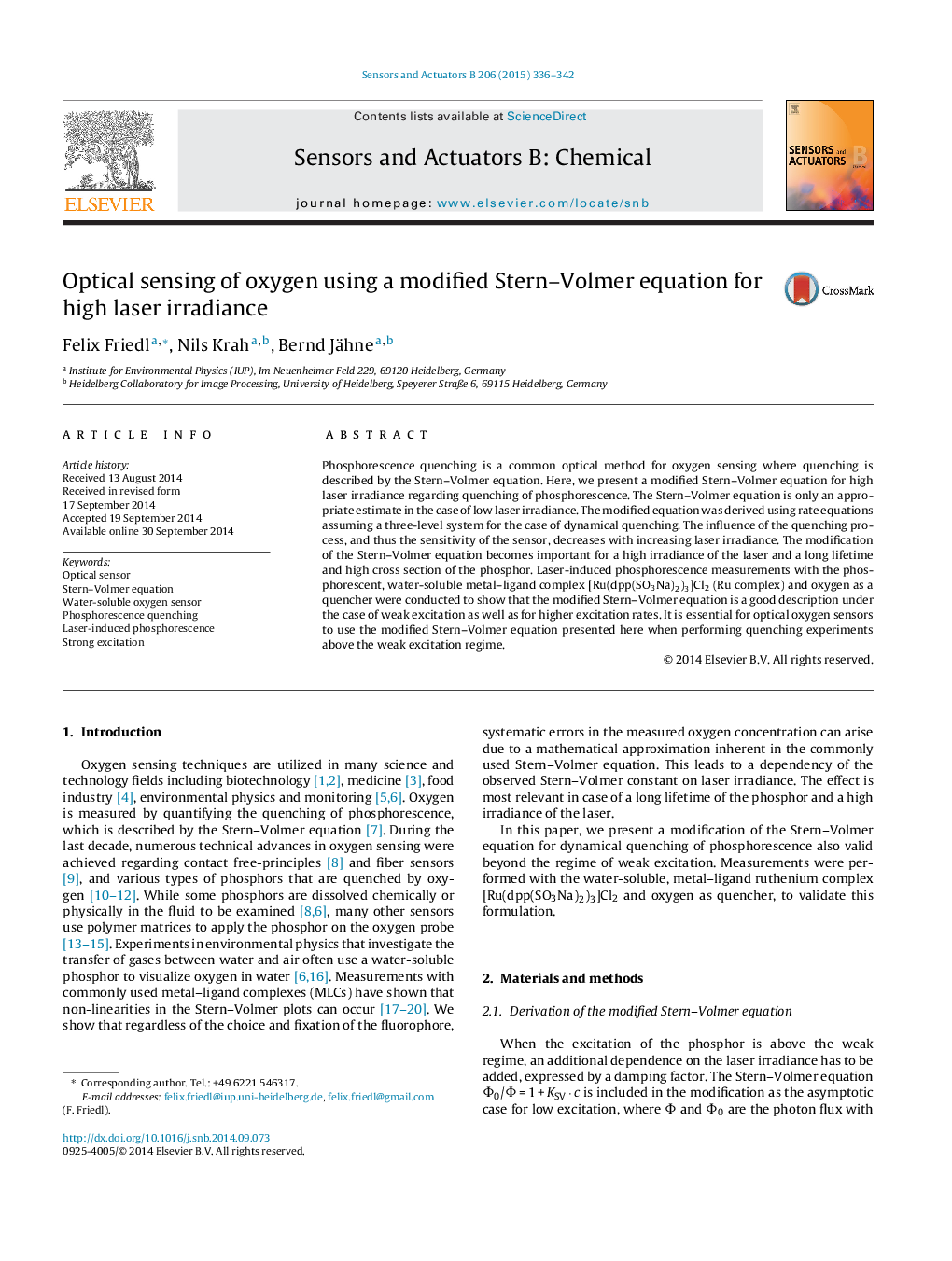| Article ID | Journal | Published Year | Pages | File Type |
|---|---|---|---|---|
| 744375 | Sensors and Actuators B: Chemical | 2015 | 7 Pages |
•We demonstrate that quenching of phosphorescence depends on laser irradiance.•We present a modified Stern–Volmer equation (SVE) for high laser irradiance.•The modified SVE is valid for weak excitation as well as for higher excitation rates.•We present phosphorescence quenching measurements which validate the modified SVE.
Phosphorescence quenching is a common optical method for oxygen sensing where quenching is described by the Stern–Volmer equation. Here, we present a modified Stern–Volmer equation for high laser irradiance regarding quenching of phosphorescence. The Stern–Volmer equation is only an appropriate estimate in the case of low laser irradiance. The modified equation was derived using rate equations assuming a three-level system for the case of dynamical quenching. The influence of the quenching process, and thus the sensitivity of the sensor, decreases with increasing laser irradiance. The modification of the Stern–Volmer equation becomes important for a high irradiance of the laser and a long lifetime and high cross section of the phosphor. Laser-induced phosphorescence measurements with the phosphorescent, water-soluble metal–ligand complex [Ru(dpp(SO3Na)2)3]Cl2[Ru(dpp(SO3Na)2)3]Cl2 (Ru complex) and oxygen as a quencher were conducted to show that the modified Stern–Volmer equation is a good description under the case of weak excitation as well as for higher excitation rates. It is essential for optical oxygen sensors to use the modified Stern–Volmer equation presented here when performing quenching experiments above the weak excitation regime.
